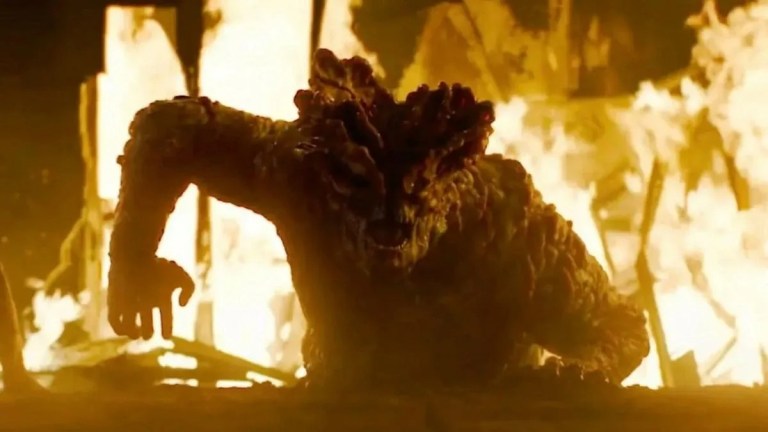The Last of Us Producers Reveal the Gory Death They Couldn’t Pull Off
While creating the fifth episode of The Last of Us, creators Craig Mazin and Neil Druckmann put realism over gory shocks.

This post contains spoilers for The Last of Us
Five episodes in, The Last of Us is more interested in breaking your heart than it is in turning your stomach. The most recent entry “Endure and Survive” is no exception, introducing us to the tragic brother duo of Henry and Sam (beautifully portrayed by Lamar Johnson and Keivonn Woodard). After giving Joel and Ellie a new set of companions and a way out of dangerous Kansas City, the episode ripped it all away with Sam’s infection and Henry’s hopeless reaction.
But the episode wasn’t all doom and gloom. Not only did we get the live-action debut of a bloater, a powerful and disgusting form of infected straight from the video game, but we saw the end of Melanie Lynskey’s Kathleen, the ruthless leader of the Kansas City resistance. Kathleen has been on the hunt for Henry, seeking revenge for his part in the death of her brother. Just when it seemed like Kathleen and her right-hand man Perry (Jeffery Pierce) would kill Henry (and possibly the other main characters), she’s interrupted, first by a horde of infected bursting from a bit and then by a feral infected child.
When the infected pit explodes, Perry turns his attention to the oncoming creatures, especially the lumbering bloater. Despite his impressive firepower, Perry cannot take down the bloater, who marches up to the soldier and tears off his head.
As satisfying as this moment was for viewers, The Last of Us co-creator Craig Mazin originally had something more spectacular in mind. “I had this thing where I wanted the Bloater to pick Perry up and rip in half at the waist,” he revealed to Collider. His co-creator Neil Druckmann (who created the video game) didn’t object with this nastier moment, but according to Mazin, he did have a question. “Well, okay, I mean is that going to be realistic?”
It turns out, the answer is “no.” Despite having the services of legendary special effects studio Wētā, they couldn’t get the effect to work. “The more [Wētā] tried to do the more you realize that people don’t rip along the waist,” Mazin admitted. “It’s really hard to do.”
Of course, other entries in the zombie genre have never bothered with questions of realism. When zombies tear apart the guts of psycho military man Rhodes in George A. Romero’s Day of the Dead, we don’t worry much about the fact that he can still talk. We want to hear him scream final curses at the undead.
But The Last of Us has worked hard to establish itself as a different type of zombie story. From its opening, in which a scientist in the 1970s explains how global warming could encourage the real-world cordyceps fungi to seek a human host, to its grounding in human emotions, the show is less concerned with the fantastic than it is in the believable.
When the show constantly gives and takes away such well-drawn and sympathetic characters, it’s hard to say which approach is more disturbing.
